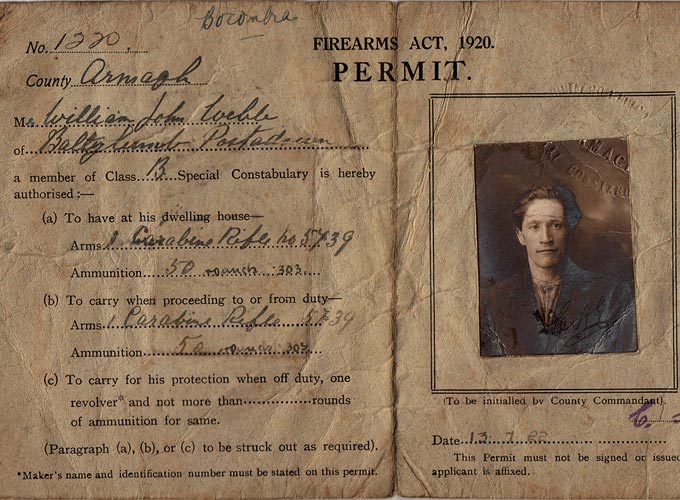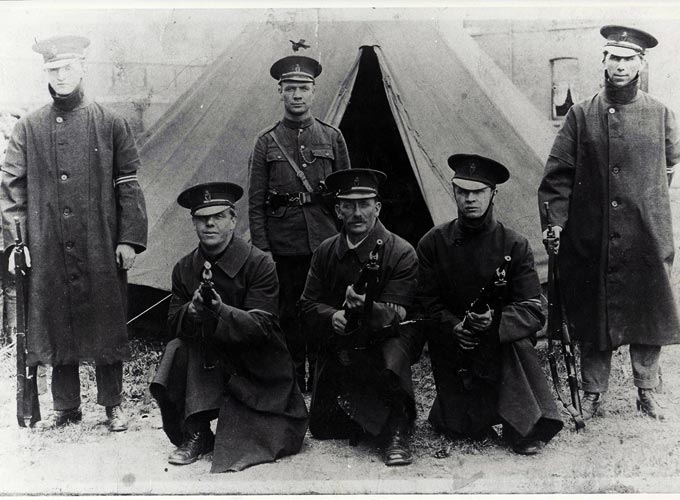Description
A firearms permit issued to a member of the B Specials in 1922. During the War of Independence, there was a increase in IRA activity, sectarian attacks, arson and rioting in the north-east of Ireland. Northern Unionists distrusted the predominantly Catholic Royal Irish Constabulary (RIC) and, concerned about security, wanted to augment the constabulary in Northern Ireland with what they considered to be a more sympathetic force. In September 1920, the Ulster Special Constabulary (USC) was established. The mainly Protestant USC consisted of ex-servicemen and members of the Ulster Volunteer Force (UVF). It was divided into three classes: the A Specials, a full-time force under RIC command, the B Specials; a voluntary part-time force that conducted armed patrols and checkpoints with RIC officers, and the C Specials; a general reserve force made up of older men.
The USC operated in the six north-eastern counties and were used to strengthen defences at larger stations, re-establish abandoned barracks and conduct checkpoints and patrols. During periods of violence, a number of special constables were involved in lootings, reprisal burnings and killings.
After the Anglo-Irish truce was agreed in July 1921, the IRA ceased attacks on crown forces and the USC was scaled back. In December 1921, the Anglo-Irish Treaty was signed, allowing the Northern Ireland government to take control of local security measures. They inherited 2,324 RIC, 3,453 A Specials, 15,944 B Specials and 1,084 C Specials and quickly set about recruiting an additional 700 A Specials and 5,000 B Specials and created the Territorial army style C1 Specials.
In the early months of 1922, the IRA began raids across the border into Northern Ireland carrying out shootings, kidnapping and arson. In response, the prime minister of Northern Ireland further reinforced the USC with new weapons and recruits. Additional A and B Specials were deployed along the border; minor roads were blown up and road blocks and check points installed at passable roads.
After the Irish Civil War began in June 1922, there was a reduction in the number of attacks in Northern Ireland and by Autumn of that year, the government began to reduce the number of Specials. In 1925, the USC was reviewed, and the A Specials and the C1 Specials were abolished, with only the B Specials remaining as support for the Royal Ulster Constabulary. The B Specials acted as a reserve force and were deployed on patrols and checkpoints during IRA campaigns or periods of civil unrest. The force was considered sectarian by the Catholic population and viewed with fear and mistrust. The B Specials shot dead a Catholic civilian in August 1969 and the force was disbanded in 1970 after the release of the Hunt report.
Links
- Related objects > RUC Reserve recruitment poster
- Related objects > Memo re: Catholic Recruitment in the RUC and USC
- British Pathé: Grave riots in Belfast, 1920
- Decade of Centenaries: Formation of the USC announced
- Hansard 15th May 1922: Ulster Special Constabulary
- BBC - On This Day - 1969: Ulster's B Specials to be disbanded
- CAIN: 'Why?' Ulster Special Constabulary Association pamphlet
- RTE Archives: Faulkner denies B Specials to be disbanded



